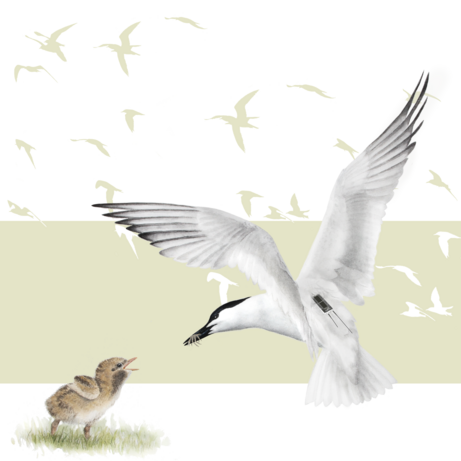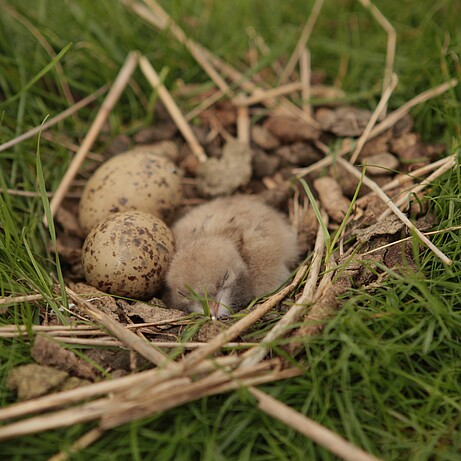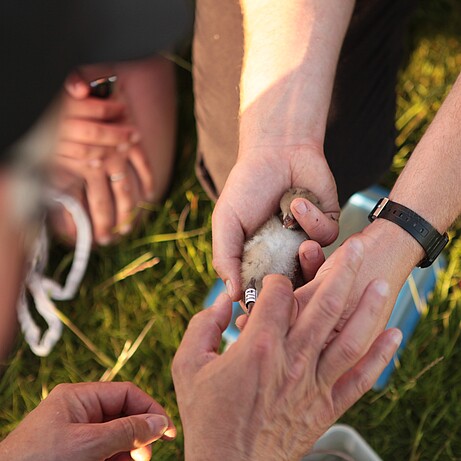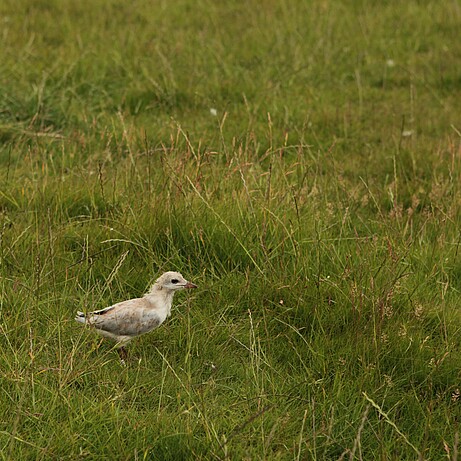



Gull-billed tern
The gull-billed tern (Gelochelidon nilotica) is a medium-sized tern whose last colony in Central Europe is located in the Elbe estuary of Dithmarschen (state of Schleswig-Holstein). By 2010, this population had shrunk to 41 breeding pairs, which led the state of Schleswig-Holstein to take responsibility for its preservation by founding a "Species conservation project for the gull-billed tern" in 2011, administrated by the ‘Bündnis Naturschutz in Dithmarschen e.V.’. The aim of the project is to prevent the extinction of the population and to ensure the protection of the large multi-species colony consisting of three species of terns, black-headed gulls, avocets, oystercatchers and other ground-nesting birds. Fencing to minimise mammalian predation pressure and habitat management currently are the main methods employed.
In 2021, we teamed up with the members of the conservation project to initiate investigation of potential threats other than predation or habitat structure. After making first inventories of prey items used and levels of various pollutants the birds are exposed to, we focused on characterising genetic structure and diversity. At present, we are adding foci on avian influenza and on the spatial behaviour of the birds both within and outside of the breeding season, and adding more detail to the pollution and genetic work.

